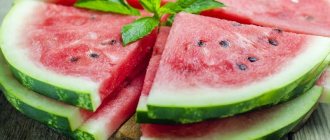Honey is rightfully a unique product, and in addition to its wonderful taste, it is famous for its many beneficial properties. In many homes, a jar of honey is opened not only for tea, but also to prevent or even cure many ailments, most often colds. Not everyone knows that honey is an excellent healer for the intestines and stomach. Using honey in combination with pharmaceuticals, you can achieve good results.
To this day, some folk recipes based on honey have survived, the use of which shows good results in the fight against disorders and diseases of the digestive tract. In the text below we will look at the cases in which honey and other beekeeping products can be used.
Honey for the intestines and stomach
Useful properties of honey
The product contains many microelements that not only have a positive effect on the functioning of the digestive tract, but are also indispensable for its full functioning, and are also necessary for disorders in the digestive organs. Honey is rich in vitamins C, E, B and PP, contains potassium, calcium, zinc, magnesium, iron and many other useful substances. Medical research confirms that bee honey is capable of:
- Remove toxins and waste from the body.
- Relieve inflammation in the stomach.
- Heal small wounds, cracks, erosions, stimulate the regeneration of mucous membranes.
- Stabilize digestion, particularly in the large intestine.
- Serve as a preventative measure against helminths and other parasites.
- Eliminate dysbiosis, restore microflora in the intestines.
- Regulate appetite.
- Relieve painful attacks, spasms, stop flatulence, improve intestinal motility and prevent constipation.
- Act against microbes.
- Relieve heartburn.
The list, as we see, is impressive, and it can be continued further. One thing is clear - the use of honey can also be useful as a preventive measure for diseases of the stomach and intestines, and in case of illness, it can be a good help.
Honey is often used for preventive purposes
Like any medicine, especially of natural origin, the use of honey may be impossible. Let's talk briefly about contraindications.
The benefits of honey
This tasty treat has many beneficial properties. Adding honey to the diet for gastritis helps normalize secretion and prevents irritation of the mucous membrane. The delicacy stabilizes the production of gastric juice during gastritis, resulting in the disappearance of abdominal pain and dyspepsia. The beekeeping product effectively restores the acidity of the juice and inhibits the development of the disease.
Important! Honey has a laxative effect, so it should not be consumed in large quantities.
The delicacy also accelerates cell regeneration, activates restoration processes in the body, and promotes the renewal of cellular structures.
Product:
- stabilizes metabolism;
- eliminates the inflammatory process;
- reduces discomfort during gastritis;
- has an antimicrobial effect.
Gastritis is a disease that affects the digestive system. The disease is characterized by inflammation of the gastric mucosa. The healing properties help improve digestion and eliminate constipation.
Honey and nutrients
Is it possible to eat honey for gastritis? This is of interest to all patients with gastrointestinal diseases. Among the components of the product there are enzymes and amino acids that have a beneficial effect on the beneficial microflora of the stomach and intestines. Their antimicrobial effect eliminates the inflammatory process and symptoms of the disease.
The bee product contains:
- vitamin A;
- B vitamins;
- vitamin E;
- vitamin C;
- fructose;
- glucose compounds;
- zinc;
- manganese;
- copper;
- chromium.
The tasty morsel contains 60 minerals, all of which take part in the biological processes of the body. Useful vitamins and minerals stimulate the functioning of internal organs, regenerate cells of the gastric mucosa, and restore secretion. 1 spoon of consumed bee product contains a large amount of useful vitamins and minerals.
What honey is good for gastritis?
Gastritis is a disease in which various disorders occur in the digestive system. The production of gastric juice becomes difficult, its acidity changes, which has an extremely negative effect on the digestion of food. To protect itself from attack by pathogenic bacteria, the stomach produces the substance gastrin in large quantities. However, an increase in the hormone leads to an excess of hydrochloric acid. High acidity juice damages the mucous membrane of the digestive organ and causes inflammation.
Is honey good for gastritis, and what kind? Yes. To normalize digestion and stomach acidity, it is recommended to take many varieties. Of particular value are:
- buckwheat;
- acacia;
- lime;
- chestnut.
Bee products can be taken from the type that bees collect from various meadow plants. This collection improves the functions of the digestive system, acts safely and helps prevent the development of ulcers. Gastrointestinal diseases can also be treated with other bee products.
Quality of honey and its proper use
Heather and chestnut varieties of the delicacy are slightly bitter. If the taste does not cause discomfort, then these products can be taken in small quantities. The linden and acacia varieties have the best taste and aroma. These delicacies are useful for recurrent abdominal pain and dyspeptic disorders.
Rules for using the product:
- For treatment, use 4 times a day.
- It is recommended to eat 30 g of the product in the morning and evening at one time.
- During the day, consume 40 g of the product.
- The product can be dissolved in water.
Treatment must be continued for 2 months. During this period, the inflammatory process will subside, discomfort in the stomach and intestines will disappear.
In what cases should honey not be taken?
The most important contraindication when treating with honey is an allergic reaction to the product. Allergies to honey are common; special caution should be taken when offering the product to children trying it for the first time. For patients for whom it is unknown whether there will be a reaction to honey or its derivatives, you should not immediately choose recipes containing the product in large quantities. You should try honey carefully, eating no more than a dessert spoon at a time and carefully observing the body’s reaction.
The second reason why you cannot use honey for medicinal purposes is diabetes. The product contains a lot of sugars, glucose, fructose, and is therefore not suitable for people suffering from this disease.
It is not recommended to use honey for people suffering from frequent diarrhea, since the bee product itself has a mild laxative effect. Honey should also be used with caution by pregnant and lactating women and patients with tumors of various origins.
For the treatment of the gastrointestinal tract, it is better to choose high-grade, fresh honey
Choosing honey to treat the intestines and stomach
It is believed that several types of honey are best suited for the gastrointestinal tract: fireweed, acacia, buckwheat, coriander and linden. Fresh, liquid honey, which retains maximum of its beneficial qualities, is often used for treatment. There are many positive reviews about honey with propolis, which has a strong antimicrobial effect and is even called a natural antibiotic. Let's take a closer look at the types of honey listed above.
Fireweed honey
Transparent honey with a greenish tint. It has a pleasant light taste, even when it crystallizes, fireweed honey melts in the mouth very quickly. Bees produce this type of honey from the plant of the same name, which blooms from late June to early July. This honey is famous for its anti-inflammatory effect, is indicated for ulcers, gastritis, diseases of the duodenum, helps get rid of high acidity, and treats constipation.
Acacia honey
The most liquid and “delicate” of all types of honey, which is why it is also called baby honey. Bees collect this honey from two types of acacia - white and yellow, respectively, the shade of the product can vary from transparent to yellowish. Acacia honey is very well absorbed by the body, contains enzymes and carotene that help proper digestion and digestion of food. Acacia honey is indicated for diseases of the gastrointestinal tract; its use is permissible for children and pregnant women under the supervision of a doctor.
The color of honey can vary from clear to yellowish
Buckwheat honey
Tart honey (when eaten it typically causes a sore throat) collected by bees during buckwheat flowering. This honey is considered high-grade, as it has a unique composition and a wide range of uses for medicinal purposes. Buckwheat honey is also able to replenish the deficiency of microelements after serious illnesses, helps with ulcers, gastritis, stool disorders, and vomiting. Contains iron and folic acid, useful after operations related to the gastrointestinal tract.
Linden honey
Fragrant light honey with a specific, recognizable taste. The product has antimicrobial, antiseptic and tonic properties. Linden honey is indicated for inflammatory processes of the gastrointestinal tract, is used to treat gastritis and stomach ulcers, and stimulates appetite.
Coriander honey
It is collected from the honey plant flower of the same name, cultivated specifically for this purpose. Coriander honey has a spicy, slightly pungent spicy aroma and contains a combination of essential oils, which gives it a unique taste and special healing qualities. The product is used for stomach disorders, disorders of the pancreas and duodenum. Coriander honey helps well with lack of appetite, stimulates and normalizes digestion, improves gastric secretion, and has a choleretic effect.
Table 1. Composition and properties of honey
| Calorie content | On average – 300 calories per 100 grams |
| Vitamin content | B, H, C, nicotinic acid |
| Micro- and macroelements | Iron, sulfur, potassium, calcium, chromium, phosphorus, fluorine, manganese, sulfur, zinc, selenium |
| Amino acids | Cystine, asparagine, arginine, alanine, lysine, leucine, tryptophan, valine, glycine, proline |
| Organic acids | Lemon, acetic, formic, maleic, gluconic, lactic |
How to eat honey correctly?
People suffering from stomach and intestinal diseases can eat no more than 100-150 grams of any honey per day. For example: 20-25 grams of product are placed in a tablespoon. It would be more correct to replace sugar in the diet with honey to avoid an excess of sucrose, which also has harmful consequences.
Honey can be taken pure or diluted in water at room temperature. In dissolved form, honey begins to interact with the body faster, since the components penetrate into the bloodstream more easily and easily. It must be remembered that hot water and heating destroy the enzyme compounds in the product, and it loses its beneficial properties. Heated honey essentially becomes just a sweet syrup, turning from a medicinal treat into a source of empty carbohydrates. Another interesting fact is that honey diluted in lukewarm water lowers the acidity in the stomach, and increases it in cool water. Therefore, it is believed that pure honey should not be consumed without breakfast.
When in contact with hot water, honey loses its healing properties.
When eating honey in its pure form, you should not swallow it right away. It is better to hold the delicacy in your mouth for some time - this way the taste will develop more fully, and the nutritional components will begin to be absorbed into the blood already in the oral cavity.
Important point! After consuming honey in this way, it is recommended to brush your teeth or rinse your mouth to prevent the formation of caries.
Next, we move on to consider recipes that, in addition to honey, contain other components that enhance its therapeutic effect. For maximum convenience, we will group popular folk recipes according to the ailments from which they help to cure.
Ulcer of the stomach and duodenum
What is a stomach ulcer?
Recipe No. 1. Healthy green leaves need to be cut from the plant and placed in the refrigerator for a week. After which the aloe is ground in a meat grinder or finely chopped, and then mixed with honey in a 1:1 ratio. The resulting gruel is taken one tablespoon in the morning (on an empty stomach); the mixture can be stored in the refrigerator for several days.
Recipe No. 2. Dissolve a tablespoon of honey and three drops of propolis tincture in a glass of water and drink on an empty stomach. Honey will ensure speedy healing of ulcers and improve mucus removal, and propolis will relieve inflammation.
Recipe No. 3. In a glass bottle you need to mix 500 grams of aloe leaves, 700 grams of honey and half a liter of alcohol. The resulting composition is infused in cold and darkness for two months. The finished medicine should be taken three times a day, a tablespoon before meals. After taking the tincture, you need to eat a piece of butter.
Recipe No. 4. Honey, crushed aloe leaves and butter are mixed in a ratio of 1:2:1. The composition should be taken one teaspoon half an hour before meals for one month. After continuous use for 30 days, you need to take a week break, then drink the composition for another month.
Application Features
Before treating your stomach with honey, you should definitely visit a gastroenterologist. There are many methods of traditional therapy, but each is intended for a specific disease, which is diagnosed by a doctor. In case of severe pain after eating and an acute inflammatory process, the use of antibacterial agents, intestinal antispasmodics, digestive enzymes and preparations with bismuth tripotassium dicitrate (Novobismol, De-Nol) will be required. And the use of honey solutions and mixtures will enhance and prolong the therapeutic effect of medications and help reduce the number of their side effects.
Honey with propolis: composition, benefits and application
Hyperacid gastritis
The pathology occurs against the background of excessive production of caustic hydrochloric acid and pepsin by glandular cells. This causes the occurrence of various microtraumas on the mucous membrane - ulcers, cracks, wounds. To minimize stomach damage, it is necessary to reduce acid production during meals. To do this, traditional healers recommend drinking a honey solution an hour before meals. You need to prepare it as follows:
- Heat 200 ml of boiled (or preferably distilled) water to a temperature of 30-35°C.
- Add a heaping teaspoon of thick flower honey and stir thoroughly.
It is necessary to take the healing dilution before meals 3-5 times a day. You should not stir honey in hot water, as most of the enzymes and organic acids will be destroyed under the influence of high temperature.
Despite all precautions, drinking a sweet solution can cause severe pain in people with extensive damage to the mucous membrane. In this case, honey in case of increased stomach acidity is taken in the form of a thick mixture. To prepare it, you need to mix the beekeeping product and fresh natural butter in equal proportions. The drug should be taken one teaspoon half an hour before meals.
Warning: Treatment with honey will not bring tangible positive results if a person does not follow a diet. During therapy for hyperacid gastritis, it is necessary to exclude from the diet fatty meats and fish, baked goods made from butter and puff pastry, alcoholic beverages, strong coffee and tea.
Hypoacid gastritis
Honey for the stomach is also actively used in the treatment of hypoacid gastritis. This type of disease is diagnosed less frequently, but causes no less suffering to a person.
Insufficient production of hydrochloric acid by glandular cells leads to long-term stagnation of undigested food in the stomach. Rotting and fermentation processes occur, often provoking the death of intestinal beneficial microflora. To speed up the metabolism of fats, proteins and carbohydrates, it is necessary to stimulate the production of pepsin and gastric juice. In folk medicine, the following technique is practiced to enhance the secretion of hydrochloric acid:
- Dilute a tablespoon of flower honey in a glass of cool water.
- Drink the sweet solution in small sips immediately before meals.
The duration of the therapeutic course varies from two weeks to a month and depends on the degree of damage to the mucous membrane. Along with digestion, peristalsis is quickly optimized thanks to the mild laxative effect of the honey solution. And an increase in acidity promotes the active growth and reproduction of lacto- and bifidobacteria in the large intestine.
Ulcerative lesions
Consuming honey significantly speeds up metabolic processes, which has a positive effect on microcirculation. Restoring blood circulation in damaged tissues ensures the flow of molecular oxygen, biologically active and nutrients to them. This complex effect accelerates the healing of ulcers on the gastric walls. Healers advise taking a medicine prepared according to the following recipe every morning on an empty stomach:
- Heat a glass of water to a temperature of 30°C and dilute a teaspoon of flower honey in it.
- Using a pipette, measure 15 drops of aloe juice (about a teaspoon) and add to the sweet solution.
The duration of the course of treatment is from one to two months, during which the ulcer gradually scars. If your stomach hurts from honey in solution, then it can be added to viscous porridges - oatmeal, rice, corn.
Warning: Honey is not used in the treatment of ulcers and gastritis in people with individual sensitivity to the active ingredients in its composition. Treatment of pregnant and breastfeeding women with a sweet product is carried out only after consultation with a gastroenterologist, as well as a gynecologist or pediatrician.
All materials on the Priroda-Znaet.ru website are presented for informational purposes only. Before using any product, consultation with a doctor is MANDATORY!
Share with friends:
Vote for this article:
(votes: 1 , average rating: 5.00 out of 5)
Loading…
1
How to recognize an ulcer?
Peptic ulcers of the gastrointestinal tract are characterized by gradual development. However, this disease manifests itself with a whole list of typical symptoms:
- discomfort in the stomach area that occurs when it is full;
- nausea and severe belching after eating;
- heartburn;
- flatulence;
- white coating on the tongue;
- weight loss;
- profuse sweating;
- constipation;
- poor appetite.
Sometimes patients may vomit undigested food during the first hours after eating.
In many patients, a stomach ulcer may occur without any symptoms.
As for bleeding from an ulcer, it occurs in only 10-15% of all patients with a similar diagnosis. Symptoms of stomach bleeding are as follows:
- vomiting with blood;
- diarrhea, which produces black stools;
- pale skin, general weakness, abdominal pain.
In 5-20% of patients, the ulcer is complicated by gastric perforation, which causes acute pain, fever, vomiting, profuse cold sweat and possible loss of consciousness. In 15% of patients, a gastric ulcer can grow into other organs of the gastrointestinal tract, thereby causing disturbances in their functioning.
In adults, a stomach ulcer is dangerous because cancer can camouflage underneath it. A sign of such a disease is the ineffectiveness of drug treatment for peptic ulcer disease.
If you suspect a stomach ulcer, a person should consult a gastroenterologist as soon as possible. After undergoing appropriate research to make an accurate diagnosis, the patient is prescribed a treatment regimen. Therapy includes taking antispasmodics, prokinetics and drugs that regulate the acidity of gastric juice. Treatment can be supplemented with folk methods, involving the use of decoctions and infusions of medicinal plants, the active components of which contribute to the regeneration of the gastric mucosa, the elimination of pain and the restoration of its functions.
Gastritis
Recipe No. 1. In a glass of hot boiled water, you need to brew two teaspoons of dried chamomile flowers and leave for about twenty minutes. When the broth reaches room temperature, a teaspoon of linden honey dissolves in it. You need to drink the mixture once, forty minutes before meals. Chamomile can be replaced with calendula or marigold if desired.
Recipe No. 2. Pour a teaspoon of flaxseeds into half a liter of water and cook for half an hour in a steam bath. The broth should be cooled and strained through cheesecloth. A teaspoon of honey is diluted in half a glass of flaxseed broth, and the medicine is drunk on an empty stomach. The honey-flax drink improves intestinal function, relieves inflammation and pain, coats the mucous membrane, immediately providing a feeling of comfort.
Recipe No. 3. If gastritis is characterized by increased acidity in the stomach, you can use the following mixture: half a liter of juice squeezed from plantain leaves is poured into half a kilogram of honey. The mixture is boiled for ten minutes, after which a glass of water is poured in. The decoction should be taken three times a day, 10 minutes before meals, two tablespoons, the course is two weeks.
Recipe No. 4. For high acidity, you can use herbal honey balm - fennel, licorice root, calamus root and flax seeds (20 grams each), linden blossom and peppermint (10 grams each) are mixed for it. Two tablespoons of the mixture are boiled in half a liter of water, after boiling, the infusion cools under the lid for two hours. A tablespoon of honey dissolves in a glass of decoction; you need to take the medicine an hour and a half before meals three times a day.
Recipe No. 5. Recommended for high acidity, very simple. You need to dissolve a teaspoon of honey in a glass of milk and drink “honey milk” exclusively on an empty stomach.
For high acidity, “honey milk” is recommended
Recipe No. 6. For gastritis, you can take the recipe with potato juice. A teaspoon of honey should be dissolved in half a glass of raw potato juice, taken three times a day an hour before meals. The course is ten days, then a similar break and repeated use.
Recipe No. 7. For low acidity, a different recipe is suitable. Honey is mixed with mashed rowan berries in a 1:2 ratio. The mixture is infused for two hours in a dark place and consumed a tablespoon four times a day. You can replace rowan berries with currants, raspberries or sea buckthorn.
Recipe No. 8. For chronic gastritis, the following recipe helps: mix a glass of honey, vodka and juice squeezed from kalonchoe leaves, leave for forty days in a dark place. 30 minutes before meals, the prepared mixture should be eaten one tablespoon at a time. The course will last until the tincture runs out.
Methods of using honey for gastritis of the stomach
Treatment of gastritis with honey should take at least 1-2 months. If there are no visible positive changes, therapy with a natural remedy should be repeated after a break. Treating gastritis with honey will eliminate the symptoms of the disease and help improve your well-being.
The method of application for gastritis may be different. Preparing a recipe for a useful product is possible at home and is not difficult.
Water with honey
Doctors recommend diluting the treat with warm boiled water. Warm water helps prevent heartburn and promotes better absorption of the product in the stomach. To take it correctly you should:
- Heat the water to a temperature of 40-50 degrees.
- Dilute 40 g of product in heated water.
- Drink the remedy on an empty stomach.
Consuming honey for gastritis is also possible with potato juice. Take the product with juice three times a day 15 minutes before meals.
In its purest form
The beekeeping product can be taken in its pure form. It is recommended to dissolve a small amount in the mouth three times a day. Use it at night - taking honey helps eliminate stomach discomfort and helps you fall asleep easily.
Honey with aloe juice
A mixture of aloe and honey is a remedy for healing the mucous membrane of the stomach and intestines. The components of the plant and beekeeping product have an anti-inflammatory effect and actively fight pathogenic agents. Aloe with honey is an effective method to treat the chronic form.
Is it possible to have honey with milk?
Any type of beekeeping product is rich in useful substances. They have a powerful anti-inflammatory effect and normalize the production of gastric juice. It is recommended to mix bee products only with warm milk and drink the product in small sips.
Important! In addition to gastritis, sore throat, cough and flu are treated in this way.
Honey and chamomile
By mixing a small amount of bee production with chamomile infusion, you can get rid of unpleasant abdominal discomfort for a long time. Chamomile is a natural antiseptic that quickly eliminates the inflammatory process, disinfects and cleanses the gastrointestinal mucosa from pathogenic flora. Honey for gastritis is a reliable remedy for getting rid of complications.
Honey and mumiyo
The next recipe is a mixture of mumiyo and bee delicacy. Shilajit is an organic mineral product with healing properties. Resin-like substances combine well with honey and have a wound-healing effect in the body. To get rid of the erosive form of gastritis, take 0.2 g of mummie and 1 teaspoon of bee product. Take in the morning and evening hours on an empty stomach.
Honey and beebread
Bee bread is plant pollen collected by bees. In the store you can buy so-called bee bread (breadbread). It should be mixed with a treat to obtain an effective remedy for treating the disease.
Recipe for pain relief
A remedy based on the use of honey and butter effectively eliminates stomach discomfort. The products are heated in a water bath, and then an ampoule of novocaine and a spoonful of sour cream are added to them. All ingredients are thoroughly mixed, after which the mixture is infused for 15 minutes. Take for severe stomach pain.
Heartburn
Aloe juice, honey and agave leaves minced through a meat grinder are taken in equal proportions. The components are mixed and taken one tablespoon before meals. You can store the mixture in the refrigerator. If heartburn does not systematically torment a person, then a good option would be “honey milk” or just a spoonful of honey dissolved in a glass of water.
How to treat heartburn at home, and which remedies are considered the most effective - read our special article.
Long-term treatment with bee products
Honey is a beekeeping product that is often used in folk medicine. It is able to relieve the symptoms of various diseases and is used as a preventive measure for dangerous diseases. Beekeeping products have long established themselves as a powerful tool for combating various ailments at home. First on the list of beekeeping products is honey. It is able to protect the stomach from superficial gastritis and relieve the discomfort that this disease causes. To prevent various diseases and strengthen the immune system, dilute honey with decoctions of medicinal herbs. One tablespoon of this remedy three times a day will help reduce the risk of developing many ailments. Including gastritis. But this remedy must be consumed an hour before meals.
Let's sum it up
For diseases of the stomach and intestines, patients, in addition to treatment, are prescribed a diet. The dietary table includes products that do not overload the gastrointestinal tract, help to spare the diseased organ, and do not disturb the mucous membrane.
One of these products is honey, which not only replaces sweet foods for patients, but is also a medicine itself. The healing properties of honey help alleviate the symptoms of diseases of the digestive tract and help prevent and cure a whole range of ailments.
Be sure to discuss with your doctor your intention to take honey and its components as medicine.











